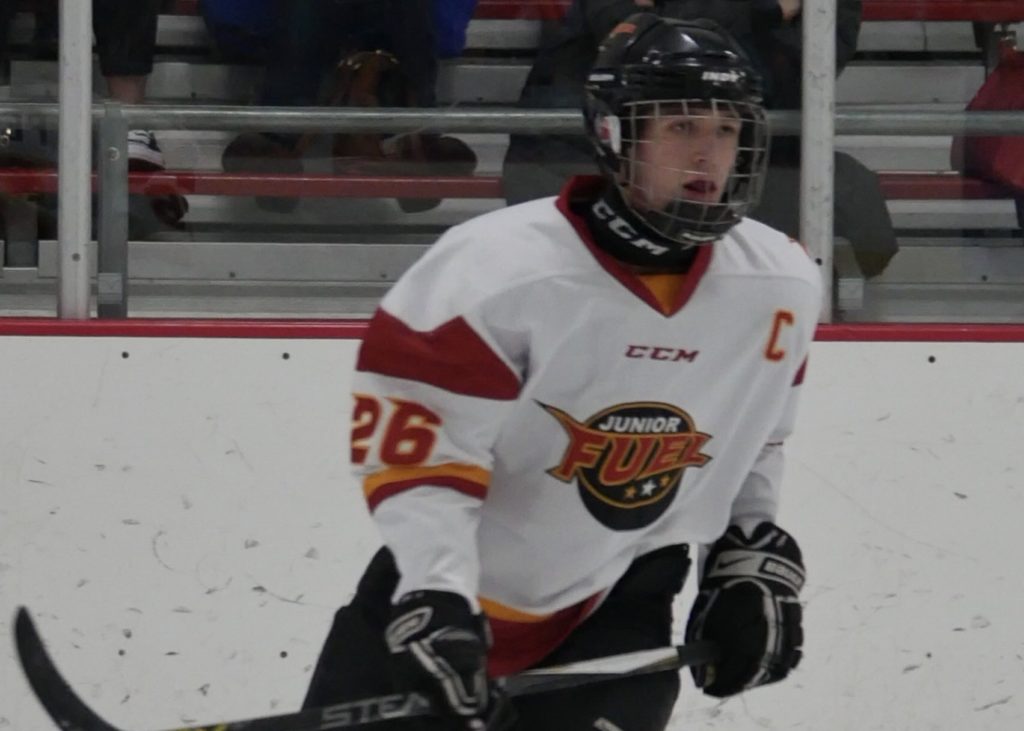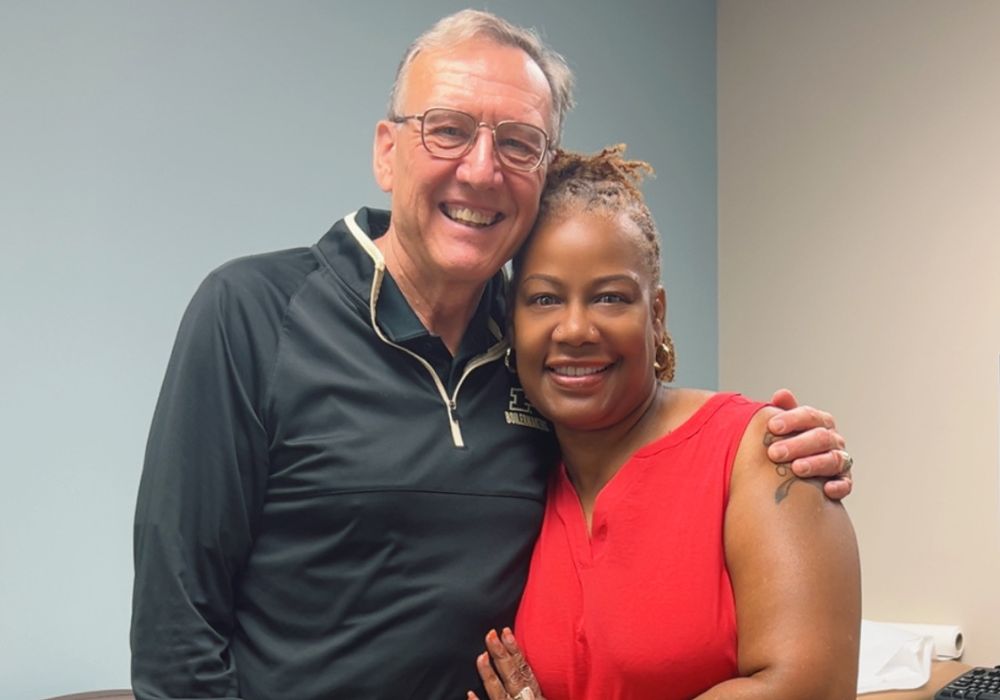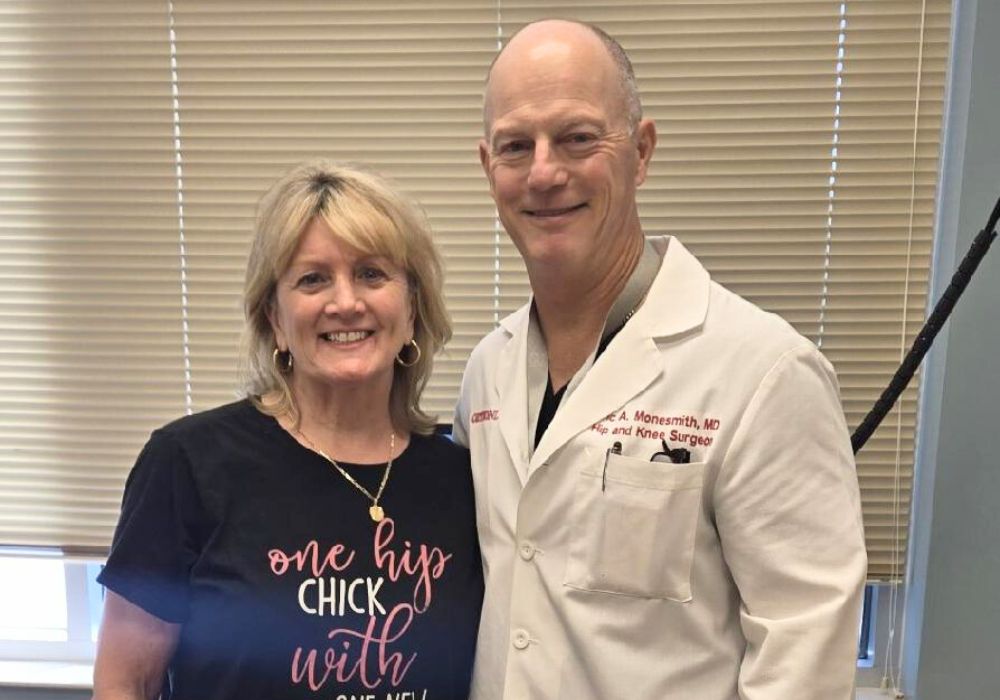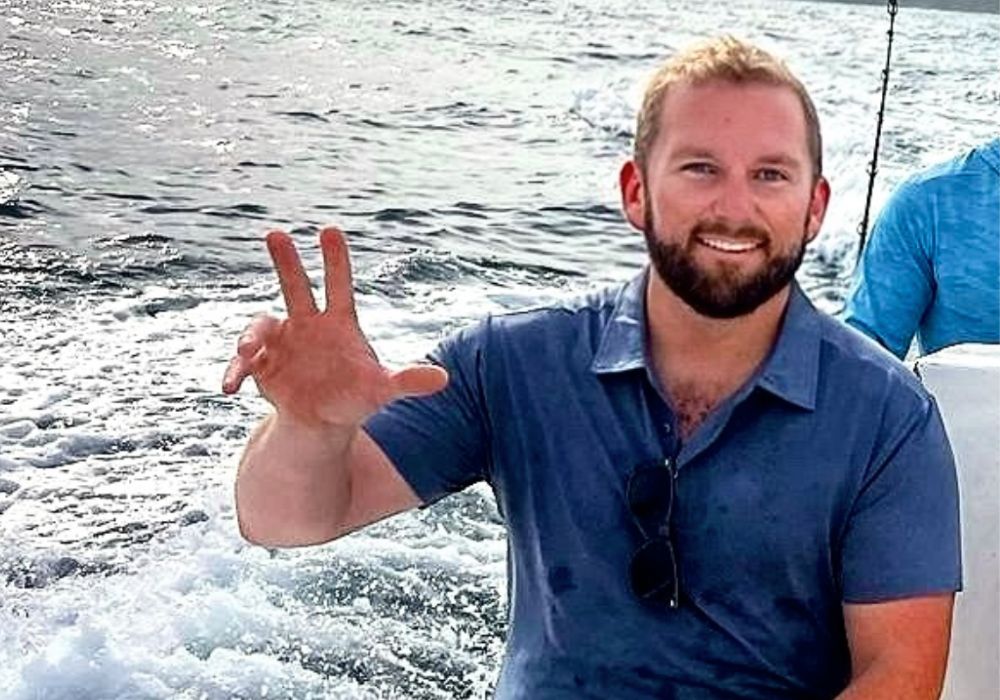This article is part of the Ultimate Guide to Sports Medicine
For 17-year-old Mac Perkins and his dad, Don, hockey is a family game. Don Perkins played professional hockey right here in Indianapolis for the Indiana Ice when they were part of the International Hockey League. At the time, Dr. Joseph Randolph, OrthoIndy sports medicine physician, was the team physician and Don got to know him well.
Eventually, Don retired and continued to play hockey for fun. However, the high impact sport started to take a toll on his body and eventually Don needed treatment for his knee. That’s when he reached out to Dr. Randolph for treatment and eventually ended up having surgery at OrthoIndy.
“The overall experience I had with Dr. Randolph and OrthoIndy was excellent. The patient care and ease of scheduling appointments and post-surgery follow-ups made choosing OrthoIndy for subsequent orthopedic issues an easy decision,” said Don.
A family matter
When his son injured his shoulder playing hockey in 2015, Don knew just where to go. This time, Don chose another OrthoIndy physician who specializes in shoulder injuries, Dr. Chris Bales. Dr. Bales, who played hockey in college at Notre Dame, also played hockey with Don and had previously treated Don’s daughter.
“My relationship with Dr. Bales as a teammate in various adult hockey leagues and tournaments made the decision to call and schedule Mac to see Dr. Bales a simple one. I knew his athletic background would provide empathy and be a good fit for getting Mac’s shoulder repaired, fully recovered and rehabbed,” said Don.
Dr. Bales determined Mac had a dislocated shoulder, which resulted in a labral tear.
“With Mac playing a contact sport like hockey and having a displaced shoulder, which also included a labrum tear, I recomm-ended surgery,” said Dr. Bales. “Surgery involves using anchors and sutures to reattach the labrum back to the bone and recreate the ‘bumper’ effect that helps stabilize the shoulder.”
Shoulder surgery and recovery
Mac underwent surgery and completed physical therapy at OrthoIndy so he could return to hockey.
“As a parent you are first concerned with making sure your child’s condition is evaluated correctly, that he understands the full extent of the injury, its possible future complications and that the options for complete recovery are spelled out clearly,” said Don. “The aspect of pain management post-surgery was well monitored and at no time did I feel that Mac was forced to endure excessive pain or discomfort.”
After surgery patients are typically placed in a sling for four to six weeks. Physical therapy is typically started in the first week to work on range of motion. Certain motions may be limited in the first six weeks after surgery to avoid placing tension on the repaired tissue and allow it to heal.
After six weeks, full range of motion is achieved and strengthening is progressed. Most patients will recover in three to four months; however, unrestricted activities are not recommended for six to eight months. Most athletes return to overhead sports in six to eight months.
“It’s been a little over two years after surgery and I feel awesome. I was able to get back to playing hockey, which was my main concern,” said Mac.
Injured again
Unfortunately, that wasn’t the last time Mac would be treated by Dr. Bales. In 2016, he found himself at OrthoIndy again; this time he had broken his collarbone playing hockey.
“Once again I did not hesitate to call Dr. Bales for his consultation and treatment. Based on the combined experiences of myself and other family members with OrthoIndy, I know that the expertise and knowledge of the doctors and the care and concern of the support staff will certainly meet my expectations for excellence for any future health issues that may arise for me or my family,” said Don.
Often, a broken collarbone (also referred to as a fractured clavicle) can heal without surgery if the broken ends of the bones still line up correctly. An arm sling or wrap is usually used for comfort immediately after the break.
You may need surgery for a broken collarbone if the bones are out of place or shortened at the break. Surgery can align the bones and hold them in place while they heal.
“Fractures of the clavicle can often be treated non-operatively, particularly in younger individuals,” said Dr. Bales. “We look at certain criteria such as the amount of shortening of the fracture and contact between the bone fragments. I felt Mac’s fracture had an excellent chance of healing without undergoing surgery. Athletes are dedicated and driven to get back to their sport and as Mac did with his labral repair, he rehabbed and worked hard to get back to hockey and obviously has continued to succeed at it.”
Whether treatment involves surgery or not, it can take several months for a collarbone to heal. Most people return to regular activities within three to six months of their injury.
Back in the ice rink
“Knowing Mac’s passion for hockey and his level of commitment I was worried that his injury would keep him from future opportunities to play. It was great to have onsite rehab so that communication between the therapist, Mac and Dr. Bales was seamless. I know that the rehab process gave Mac the confidence he needed to keep working hard to meet his prescribed timeline for returning to the ice,” said Don.
In no time at all Mac was back on the ice and plans to remain working hard to continue playing hockey for years to come.
“I’d just like to thank Dr. Bales and OrthoIndy for the tremendous help they gave me. I was able to get back to doing what I love and that is a service I’ll never forget,” said Mac. “Dr. Bales is the best, he genuinely cares about you and connects on a personal level, and he doesn’t see you as just another face. He sticks with you from the first visit to the last.”
To make an appointment with Dr. Bales please call 317.268.3632 or learn more about sports medicine treatment at OrthoIndy.
Schedule an appointment
Your well-being is important to us. Click the button below or call us to schedule an appointment with one of our orthopedic specialists. If your injury or condition is recent, you can walk right into one of our OrthoIndy Urgent Care locations for immediate care. For rehabilitation and physical therapy, no referral is needed to see one of our physical therapists.





